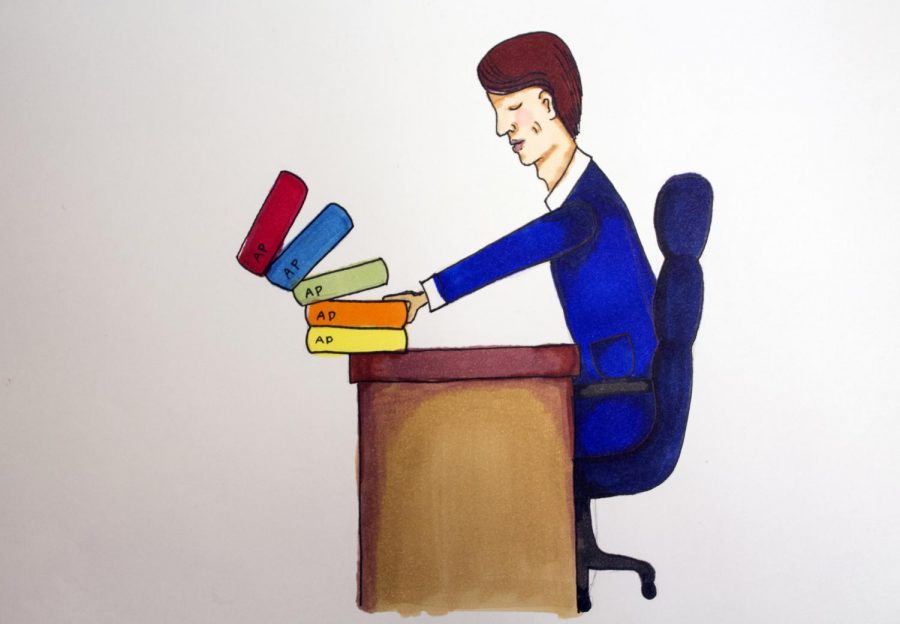The staggering push for AP
November 28, 2018
Everything we do today is to help us tomorrow. You go to bed early so that you can wake up early tomorrow. You go to work today so that you can have money in the future. You take AP classes so that you can save money and time in college.
In 2016, more than 2.6 million students across America took at least one AP exam. This is almost double the amount of students that took them a decade earlier. In the 2018-2019 school year here, there are now 20+ AP classes being offered- one for almost every department.
From the beginning of a student’s high school career they begin to prepare for rest of their life. And many times, the rest of their life includes college. Now more than ever college has become a large and fundamental part of our futures. According to the U.S. Department of Labor, 69.7 percent of high school graduates in 2016 enrolled in college.
AP classes have become the norm, even for students who aren’t ready for them. At our own school, sophomores have to choose between regular and AP for their history class. They no longer have the option of pre-AP. More and more students load up their schedules with these AP classes and push themselves to earn college credit and prepare themselves for their possible future majors.
While AP is helpful in many instances, sometimes its uses can be hindered. Some colleges don’t accept AP as credit; leaving a year’s worth of work, stress, and time to waste. Likewise, because of the heavy push for enrollment in these classes, some students are in them without being ready, or don’t take them seriously. This inhibits the learning of those who want to be there. Because of the push for higher numbers of AP students, classes are inflating in size, leaving less one-on-one time with teachers. Some AP classes have become so big teachers and students feel cramped in classes of 25 kids or more.
Measures have already been put into place to help combat the stresses of AP. Classes like Foundations of AP help teach kids how to study and prepare for AP classes. Despite the large class sizes, AP teachers still put in the effort to help all of their students when they need it.
The solution is there, if students know where to find it. They need to learn their limits of stress and how much work they can actually handle. It’s okay to say no; it’s okay to go easy with the workload they make for themselves and take only as many AP classes as they feel ready for. Especially in students first year of taking AP classes. If they’re not confident they’ll do well on the AP exam at the end of the year, then is it worth the stress the whole year leading up?
As a school, we need to encourage a balance of advanced classes with regular classes and electives. There should be a stronger push for art classes and other electives; by taking creative classes students enjoy, they’ll have classes to look forward that could help lower their stress. Overall, this could improve their grades and life school.
In the end, it’s up to you to decide how much stress you want to give yourself. Find your balance, push yourself to do your best, and go.



